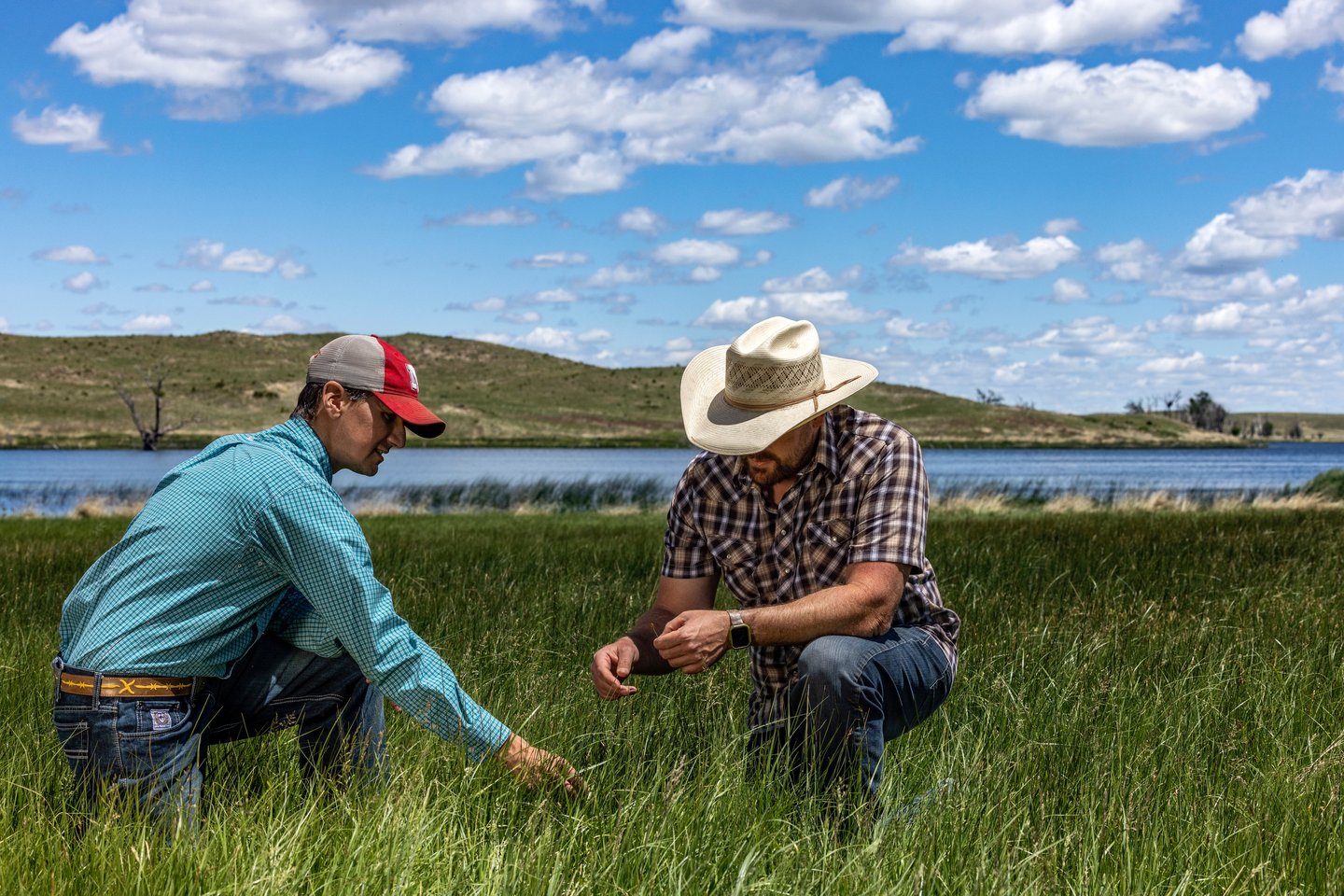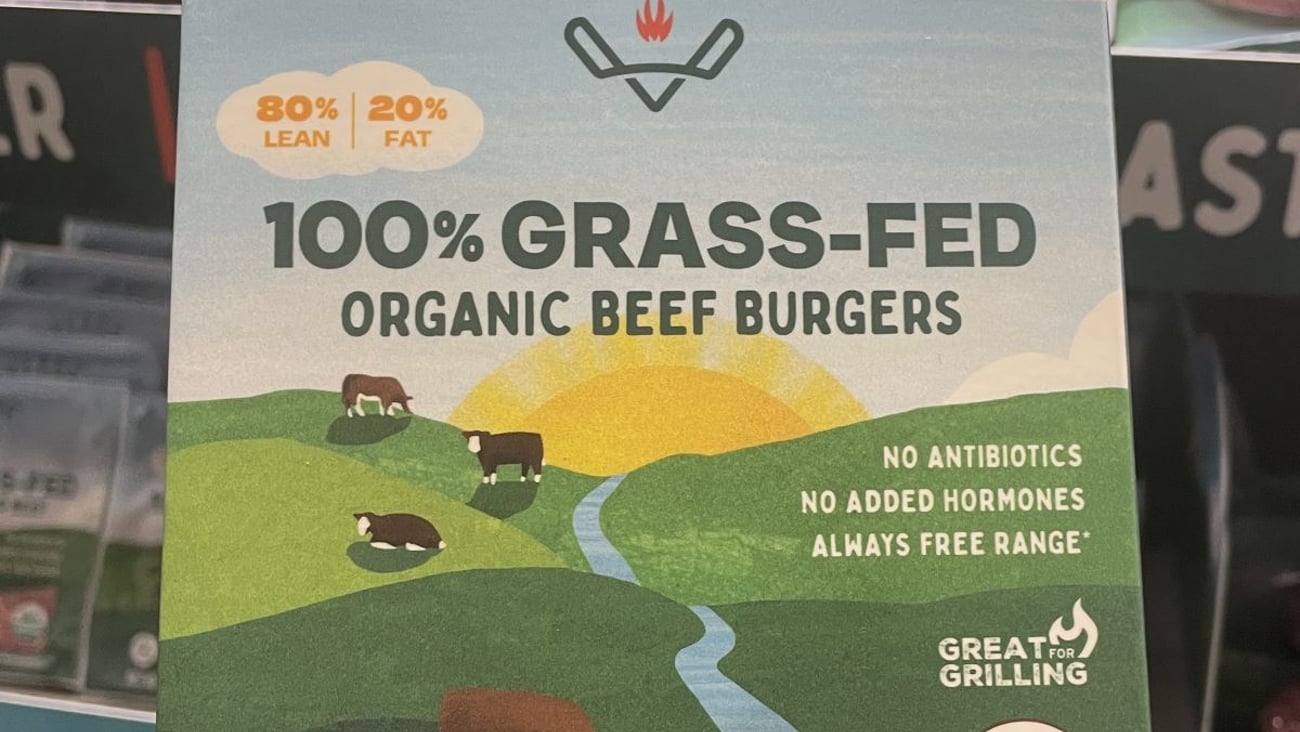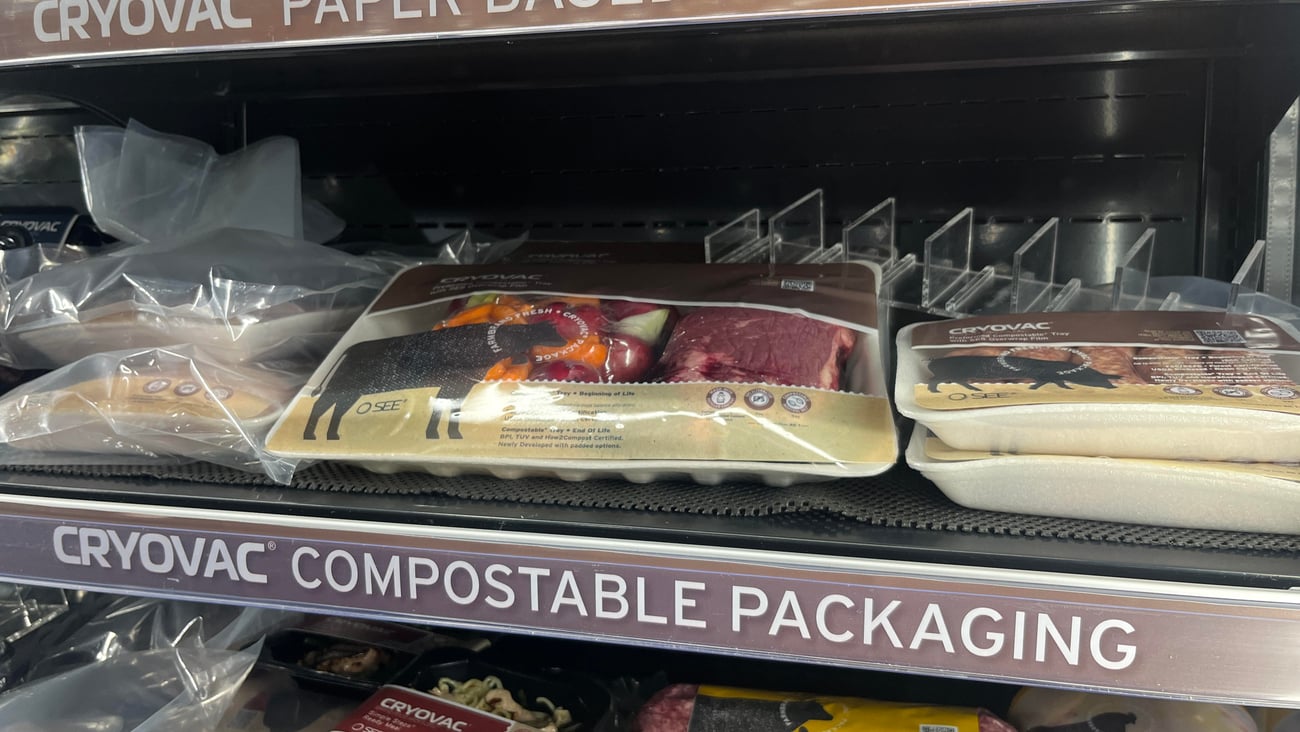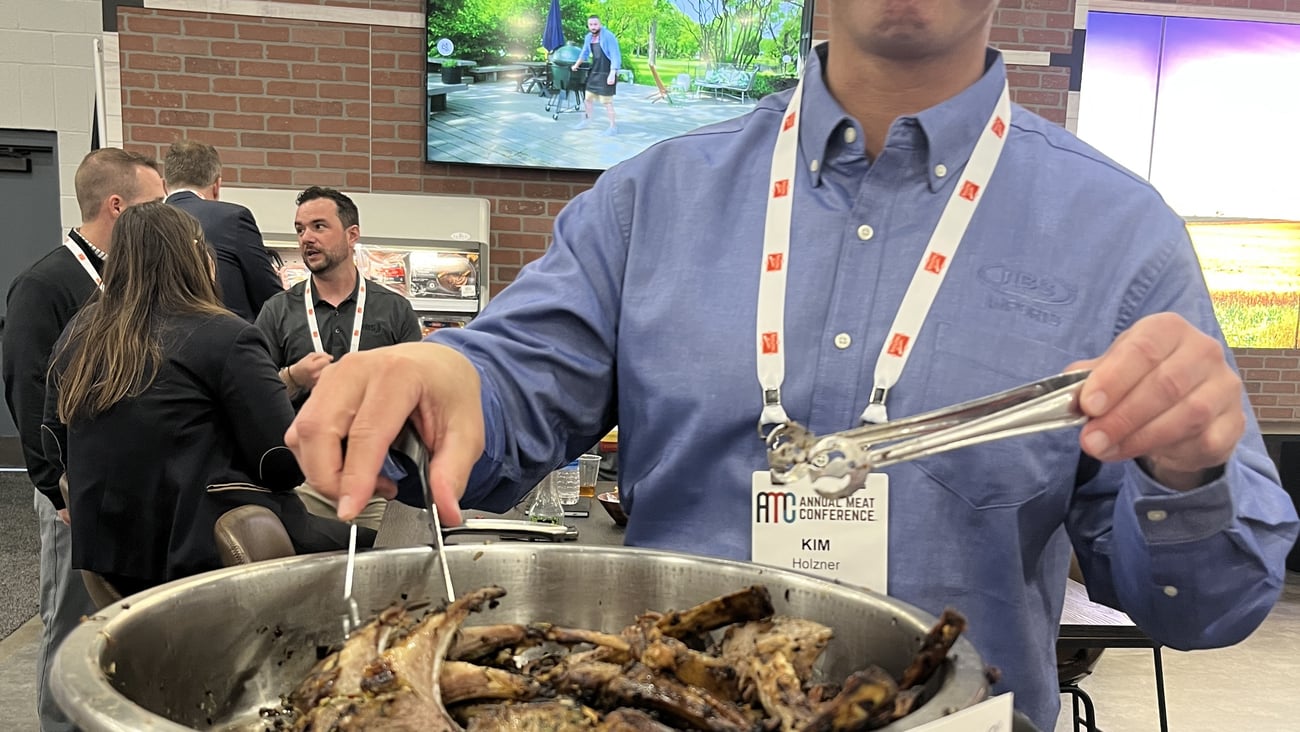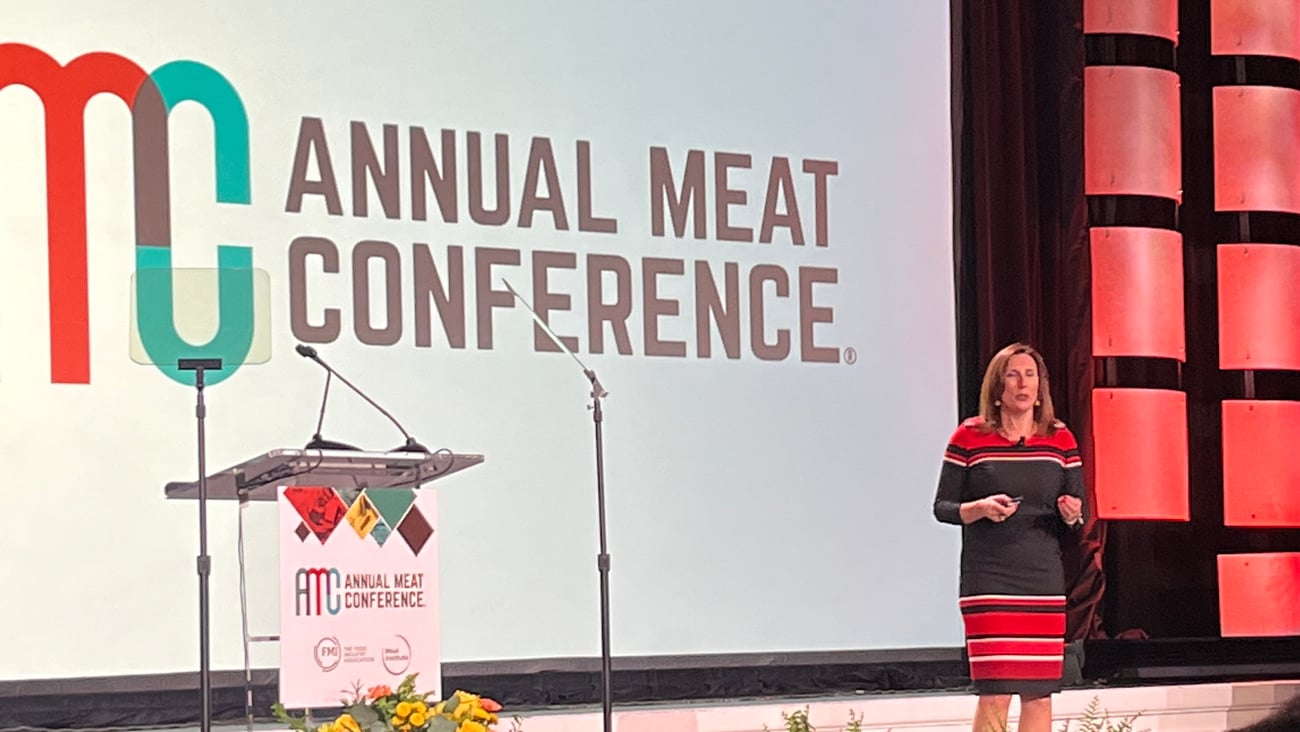Meat Trends Worth Heeding
The Annual Meat Conference (AMC) in Nashville wrapped up on March 20, as industry stakeholders including retailers, food companies and packers/processors, received fresh learnings during the three-day event. Given that meat has a 98.2% household penetration and the meat department generated $99 billion in sales last year, there was much to take in and take back to their respective organizations.
Progressive Grocer was on hand for several educational sessions and exhibits. In between samples – including Great Southern grass-fed rack of lamb slices from JBS Imports and Nashville hot seasoned pork loin filet sliders from the Prairie Fresh brand of Seaboard Foods, among dozens of other items – we gleaned some key trends relevant for those who sell meat.
[RELATED: 3 Takeaways From ‘The Power of Meat 2024’ Study]
Stewardship Sells
Dozens of meat companies throughout the exhibit hall promoted their respective approaches to stewardship of the land and animals. Attendees heard a lot about regenerative agriculture and facets of organic production and labeling.
Sound bites:
“Consumers want to have the steakhouse-quality eating experience, but they don’t want to give up what’s important for them in their values. Generally, people continue to vote with their dollar, and we see that organic beef has generally weathered the inflationary environment better than other forms of beef. It is the only category of beef that grew in both dollars and volume.” – Pete Lewis, chief marketing officer at Gorden, Neb.-based Open Range Beef, producers of 100% U.S.-raised, USDA Organic 100% grass-fed beef, including its own Spring Lake Ranch line and a new line of pasture-raised angus-raised beef.
“On the regenerative front, there is a symbiotic relationship between how we treat the animals, how we treat the land that those animals graze and ultimately the quality of the product and meat. If we can continue to objectively show that we’re moving the needle in a positive direction in soil chemistry and biology as well as carbon sequestration and proving biodiversity at the same time, the animal performance is enhanced and the eating quality of the products is enhanced. It’s a win-win.” – Tim Goodnight, VP, Open Range Beef, which deploys the latest agtech tools at its ranch to track the impact of regenerative agriculture while enabling end-to-end traceability.
“There is a small group of people who really understand regenerative agriculture. There’s a slightly bigger group of people who kind of understand it and know that it’s important and they are interested in learning more. And then there are consumers on the periphery who might say, ‘Well, that is that all about?’ What we’re excited is talking with each of those groups and educating them on it. There’s no trade-off – it’s not like you’re giving them something that is not quite as good as the ‘real’ version. This meat is actually better from a quality standpoint and also really good for the environment and the land.” – Brad Johnson, CEO of Verde Farms, which received Land to Market verification for regenerative agriculture practices last year.
“I like to use the term ‘continuous improvement.’ Sustainability has a lot of different definitions – it’s not just environment, which is one piece of the puzzle. It also incorporates animal welfare, environmental impact, food safety, human health and wellness, labor, human rights, food security and nutrition. We want to make sure that we’re working towards those and have developed industry-wide goals related to those different focus areas. We’re also working with restaurants and retailers to make sure that we are aligned with them and ensuring that we are working towards solutions together,” – Eric Mittenthal, chief strategy officer at the Meat Institute (formerly North American Meat Institute), discussing the Protein PACT, which unites partners across the animal protein sector in a joint effort to accelerate progress toward global sustainability.
Pay Attention to Greener Packaging
Under the broader umbrella of sustainability, packaging is a hot topic and not just because Earth Month is coming up. Many exhibitors and session presenters touched on advancements in packaging that reduce food waste and package waste while continuing to protect the product for quality and safety purposes.
Sound bites:
“We talk to consumers and processors, and sustainability means different things to different people. This year, we broke it out and have paper-based solutions, food-waste solutions, recycle- ready products, curbside recycle package reduction and the compostable tray, which is our newest one.” – Sean Brady, market development manager at Cryovac, part of SEE (formerly Sealed Air Corp.), at the company’s booth.
“Food packaging is essential packaging. Meat packaging is not the same kind of packaging that goes around a candy bar or salty snacks or shampoo or laundry detergent. It's been designed specifically to protect the products to distribution all the way to the retail shelf and to the end consumer, and food waste can't be taken lightly. If you really want to have a battle on climate and a battle on greenhouse gas emissions, it's got to be with the recognition that protecting food and preventing food waste is a fundamentally important step in order for us to be able to do that. Collaboration is going to be essential for us to achieve our goals – everyone across the entire value chain, from producers and brand owners to retailers and consumers, packaging companies, and the recycling infrastructure, has to work together if we think we're going to be able to achieve our goals and really reduce the environmental impact associated with packaging.” – Myra Foster, VP, sustainability and innovation, SEE (formerly Sealed Air Corp.), in a session in packaging sustainability.
Consumers Seek Flavor Experiences
Shoppers, especially younger consumers in the Gen Z demographic, enjoy trying new things and are open to different meat flavor profiles and cuts. Keeping these younger shoppers, who tend to gravitate to poultry, attracted to the meat case means touting more options.
Sound bites:
“What we call our ‘Connected Trendsetters,’ who have a younger profile, are the ones who are like, ‘Show me something new and exciting. I want to experience it, I want to understand it.’ They would be open to a pork tenderloin and learning what to do with it. Pork has a tremendous opportunity. The younger generations are trying alternative things, so they’re trying lamb, bison. That’s where lamb, too, can lean in and focus on ‘How do I get these new consumers’?’” – Michael Uetz, co-founder of Midan Marketing.
“One thing that is unique with our Prairie USA Prime is that we use a proprietary technology that scans the whole carcass for the lipid amount. So, everything that comes from that carcass is USA Prime and the marbling is very consistent. Pork is the best carrier of flavor.” – Ozlem Worpel, VP of marketing and innovation at Seaboard Foods.
Maximize Sales Through More Occasions
The latest Power of Meat study from FMI and the Meat Institute and other research from Circana shows that to drive up volume that drives sales, retailers and brands can focus on opportunities across dayparts. Those opportunities can include special events, like hatch chile festivals or holidays like Cinco De Mayo, as well as promotions geared to dayparts including breakfast and late-afternoon snacking.
Sound bites:
“From a unit perspective, it’s really about getting one more in the basket, right? Meal occasions evolve throughout the day. The way to uptick units is to embrace occasions. Have an occasion manager in your store or for your company. As you do that and think about the week, then you absolutely can find ways of getting units for multiple days or additional occasions.” – Sally Lyons Wyatt, global EVP and chief advisor, consumer goods and food, Circana.
“Oftentimes, we spend a lot of labor and work on those dinner sets for meal solutions, but why not have breakfast or lunch in a whole different line, just like restaurants do in different dayparts? There is also entertaining, which is very hot and one of the reasons why people are willing to spend a little bit more.” – Anne-Marie Roerink, principal, 210 Analytics and author of The Power of Meat 2024, during the Power of Meat presentation.



